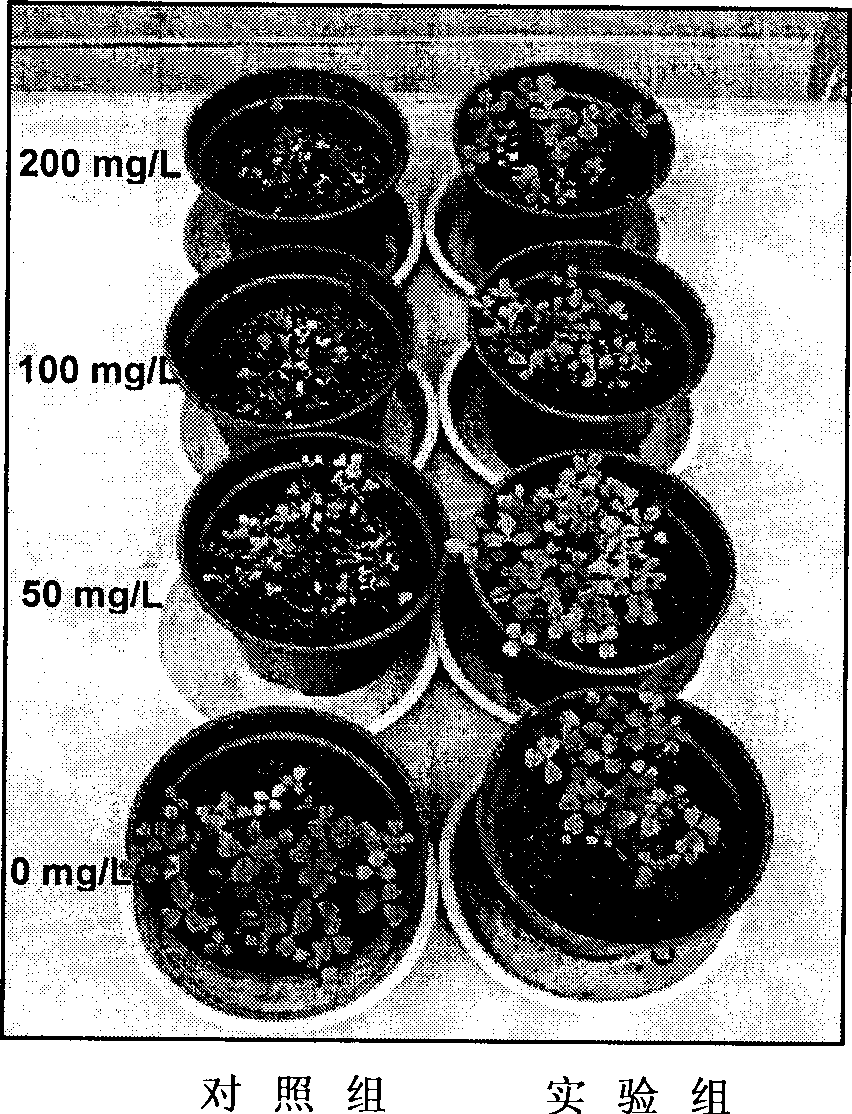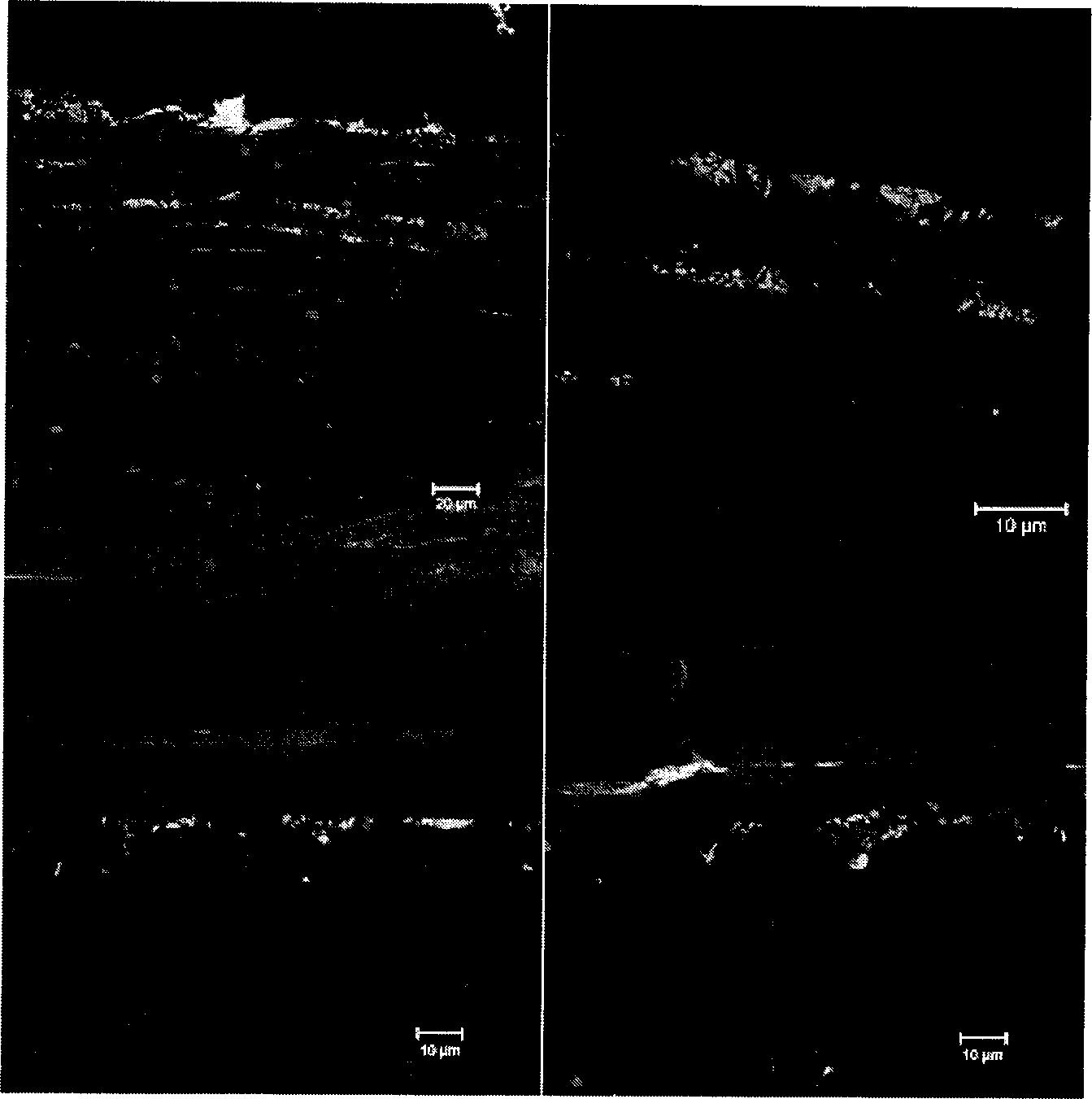Biological restoration method for p-chloronitrobenzene compound polluted environment
A technology of chloronitrobenzene and p-chloronitrobenzene, which is applied in the restoration of polluted soil, chemical instruments and methods, biological water/sewage treatment, etc. Effect
- Summary
- Abstract
- Description
- Claims
- Application Information
AI Technical Summary
Benefits of technology
Problems solved by technology
Method used
Image
Examples
Embodiment 1
[0029] Embodiment 1, detect the repair ability of the inventive method to the soilless substrate polluted by p-chloronitrobenzene compounds
[0030] Taking p-chloronitrobenzene as an example, the method for detecting the repair ability of the soilless substrate polluted by p-chloronitrobenzene compounds, the specific process comprises the following steps:
[0031] 1) Inoculate Comamonas testosteroni (Comamonas testosteroni) CNB-1 CGMCC No.1028 in an inorganic salt medium with p-chloronitrobenzene as a substrate, and vibrate at 28°C and 130rpm for 16 hours to obtain seeds liquid;
[0032] 2) Inoculate the seed solution of Comamonas testosteroni CNB-1 CGMCC No.1028 obtained in step 1) into LB liquid medium at an inoculation ratio of 1%, and culture it with shaking at 30° C. for 18 hours;
[0033] 3) Collect the bacteria by centrifugation at 6000rpm, and resuspend it in a sterile solution with a mass percent concentration of 0.9% NaCl to make the OD 600 Reach 2.0, obtain the ba...
Embodiment 2
[0037] Embodiment 2, detection method of the present invention is to the remediation ability of the soil polluted by p-chloronitrobenzene compounds
[0038] Taking p-chloronitrobenzene as an example, the pot experiment is used to detect the repair ability of the inventive method to the soil polluted by p-chloronitrobenzene compounds, and the specific process comprises the following steps:
[0039] 1) Inoculate Comamonas testosteroni (Comamonas testosteroni) CNB-1 CGMCC No.1028 in an inorganic salt medium with p-chloronitrobenzene as a substrate, and vibrate at 30°C and 130rpm for 16 hours to obtain seeds liquid;
[0040] 2) Inoculate the seed solution of Comamonas testosteroni CNB-1 CGMCC No.1028 obtained in step 1) into LB liquid medium at an inoculation ratio of 1%, and culture it with shaking at 28° C. for 18 hours;
[0041] 3) Collect the bacteria by centrifugation at 7000rpm, and resuspend it in a sterile solution with a mass percent concentration of 0.9% NaCl to make th...
Embodiment 3
[0046] Embodiment 3, Comamonas testosteroni (Comamonas testosteroni) CNB-1 CGMCC No.1028 in the detection of alfalfa root colonization ability
[0047] In order to facilitate the observation of the colonization of p-chloronitrobenzene-degrading strain Comamonas testosteroni (Comamonas testosteroni) CNB-1 CGMCC No.1028 in the plant root system during the bioremediation process, green fluorescent protein (green fluorescence protein, GFP ) gene is integrated on the genomic DNA of Comamonas testosteroni (Comamonas testosteroni) CNB-1, and specific method is: (1) preparation of Comamonas testosterone (Comamonas testosteroni) CNB-1 competent cell: summary of the invention The seed solution obtained in step 1) was inserted into LB liquid medium according to the inoculation amount of 1%, and cultured with shaking at 130rpm at 28°C to make its OD 600reach 0.3-0.4, (the following operations are all carried out at 4°C) collect the bacterial cells by centrifugation at 4500rpm, resuspend t...
PUM
 Login to View More
Login to View More Abstract
Description
Claims
Application Information
 Login to View More
Login to View More - R&D
- Intellectual Property
- Life Sciences
- Materials
- Tech Scout
- Unparalleled Data Quality
- Higher Quality Content
- 60% Fewer Hallucinations
Browse by: Latest US Patents, China's latest patents, Technical Efficacy Thesaurus, Application Domain, Technology Topic, Popular Technical Reports.
© 2025 PatSnap. All rights reserved.Legal|Privacy policy|Modern Slavery Act Transparency Statement|Sitemap|About US| Contact US: help@patsnap.com


